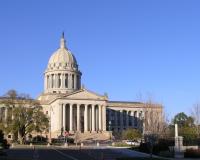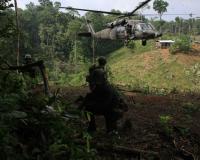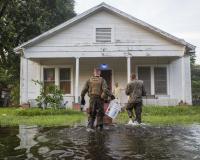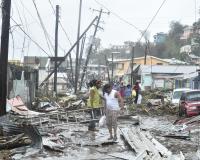
Vibrant Environment
All | Biodiversity | Climate Change and Sustainability | Environmental Justice | Governance and Rule of Law | Land Use and Natural Resources | Oceans and Coasts | Pollution Control

Earlier this year, the New York City Council took a notable step forward in addressing common indoor environmental health hazards. The Council passed Law 2018/055, which amends the city’s housing maintenance code to require private landlords to prevent and remediate indoor asthma triggers in their multifamily residential buildings.

After a slew of earthquakes triggered from shale oil and gas operations, the Oklahoma Corporation Commission (OCC), the state’s oil and gas regulator, released new rules designed to reduce seismic activity. Hydraulic fracturing—fracking—is being used in combination with horizontal drilling to extract shale oil and gas in what has been called the “US’s hottest new area for horizontal development” in the state’s SCOOP [1] and STACK [2] shale plays, located in the Anadarko Basin.

Historically, the Gulf Coast region has produced more seafood than anywhere else in the continental U.S., both in volume and dollar value. Before the BP oil spill, in 2009, the Gulf seafood industry provided over 213,000 full- and part-time jobs. The oil spill has had a devastating impact on people working in the Gulf’s seafood industry. As a result of the BP oil spill, over 88,000 square miles of the Gulf’s federal waters—nearly 37%—were closed to fishing. There were also fishing closures in the state waters of Alabama (40% closed), Florida (2% closed), Louisiana (55% closed), and Mississippi (95% closed). Fishermen are still facing financial instability years after the spill, and have observed significant declines in landings and stock quality. Here, we highlight one Gulf fisherman’s perspective.

I went to the North Pole in April, the favored month for travel in the High Arctic. That was 16 years ago. According to the 2017 National Climate Assessment, the region’s warming began accelerating around the time of my visit. It is no longer the same frozen ecology and economy I had seen.

Colombia’s government and FARC rebels signed a historic peace accord in late 2016, ending a civil war that caused over 220,000 deaths and the internal displacement of over 7 million people. In addition to devastating lives and livelihoods, the civil war was destructive to the environment. Following historic negotiations and the congressional ratification of a revised agreement, Colombia still faces environmental risks in a time of relative peace. It is crucial that ongoing talks and reforms in the wake of over five decades of conflict take these factors into account in order to ensure sustained peace and development for the future.

Smart meters—small, electronic devices that track and record energy consumption and communicate information back to the electrical utility—can reduce energy use by empowering consumers with the ability to monitor energy use and make better choices. Smart meters are an upgrade to outdated analog meters because they automatically record information in real time instead of requiring someone to manually record and transmit the collected data.

In An Inconvenient Truth, Al Gore famously used the example of a slowly boiled frog as a metaphor for climate change. That turns out not to be accurate, as biologists say the frog is smart enough to jump out of the pot long before it becomes frog soup. But the problem Gore described is real enough.

Just over five months have elapsed since Hurricane Harvey battered the Texas Coast, dropping more than 50 inches of rain on parts of the Houston area. The storm’s devastation was swift, killing 88 people and displacing many thousands. Yet, Harvey’s full impacts continue to unfold. Beyond imposing huge material losses, the storm has taken a significant toll on the health of those in its wake. It may be wise to understand storm events like Harvey not only as short-term physical disruptors, but as public health crises that will likely unfold over many years, long after media attention and political will to respond may have cooled.

Four months after Category 5 Hurricane Maria swept through Puerto Rico causing catastrophic damage, much of the island is still without power, food, and water. The storm knocked out power to almost all the commonwealth—homes, schools, hospitals, and other critical services and infrastructure were left without power. Even now, over one-third of the island is still without electricity, and many are left without access to food and running water.

With the Paris Climate Agreement’s goal to keep average global temperature from rising more than 2 degrees Celsius above pre-industrial levels, governments across the world are struggling to reduce carbon dioxide (CO2) emissions voluntarily and collectively. Some have described this challenge as a prisoner’s dilemma. Removing carbon from the atmosphere may be the key to escape.